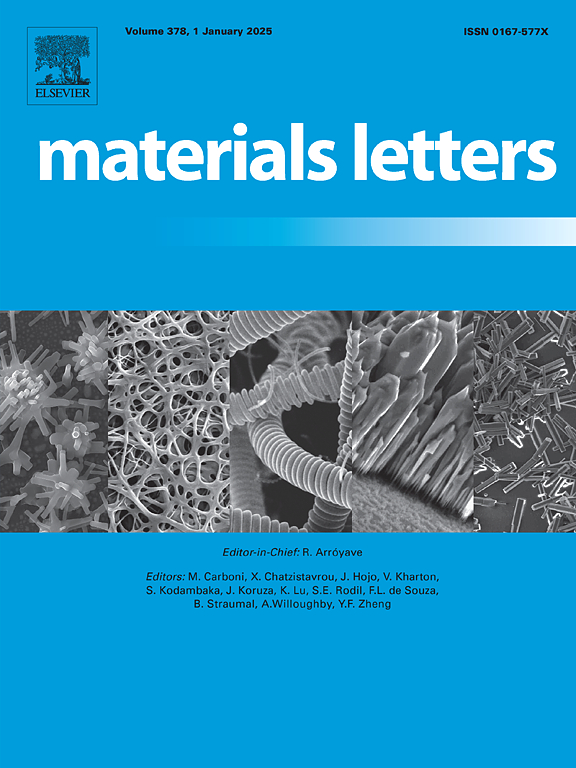Investigation of TiCN thin films prepared by cathodic arc deposition for alternative SERS substrates
IF 2.7
4区 材料科学
Q3 MATERIALS SCIENCE, MULTIDISCIPLINARY
引用次数: 0
Abstract
We report the cathodic arc deposition of TiCN thin films on a silicon wafer substrate at various N2/C2H2 flow rate ratios for alternative SERS substrate. Structural, morphological, and electronic structures were analyzed by GIXRD, FE-SEM, and XAS. Spectroscopic ellipsometry (SE) determined the dielectric function and Q-factor to evaluate SERS potential. Our results show that polycrystalline TiCN thin films exhibit plasmonic properties, with highest Q-factor in near-infrared region. Preliminary SERS performance using Rhodamine 6G (R6G) identified the optimal film, at a 2.3 N2/C2H2 ratio, achieving a high EF at 10−6 M and LOD of 2.11 × 10−7 M. These findings highlight TiCN thin film as promising candidates for SERS sensor applications.

求助全文
约1分钟内获得全文
求助全文
来源期刊

Materials Letters
工程技术-材料科学:综合
CiteScore
5.60
自引率
3.30%
发文量
1948
审稿时长
50 days
期刊介绍:
Materials Letters has an open access mirror journal Materials Letters: X, sharing the same aims and scope, editorial team, submission system and rigorous peer review.
Materials Letters is dedicated to publishing novel, cutting edge reports of broad interest to the materials community. The journal provides a forum for materials scientists and engineers, physicists, and chemists to rapidly communicate on the most important topics in the field of materials.
Contributions include, but are not limited to, a variety of topics such as:
• Materials - Metals and alloys, amorphous solids, ceramics, composites, polymers, semiconductors
• Applications - Structural, opto-electronic, magnetic, medical, MEMS, sensors, smart
• Characterization - Analytical, microscopy, scanning probes, nanoscopic, optical, electrical, magnetic, acoustic, spectroscopic, diffraction
• Novel Materials - Micro and nanostructures (nanowires, nanotubes, nanoparticles), nanocomposites, thin films, superlattices, quantum dots.
• Processing - Crystal growth, thin film processing, sol-gel processing, mechanical processing, assembly, nanocrystalline processing.
• Properties - Mechanical, magnetic, optical, electrical, ferroelectric, thermal, interfacial, transport, thermodynamic
• Synthesis - Quenching, solid state, solidification, solution synthesis, vapor deposition, high pressure, explosive
 求助内容:
求助内容: 应助结果提醒方式:
应助结果提醒方式:


